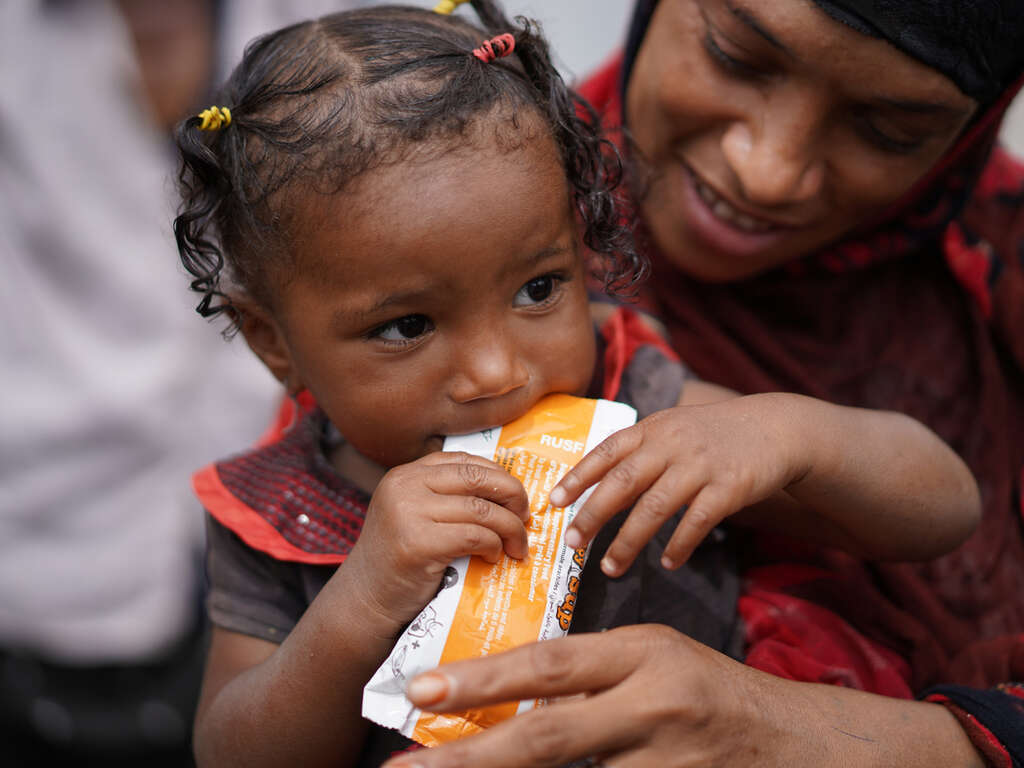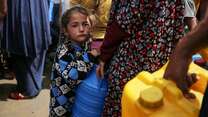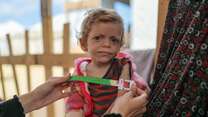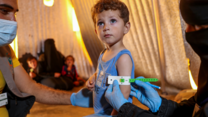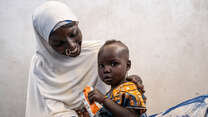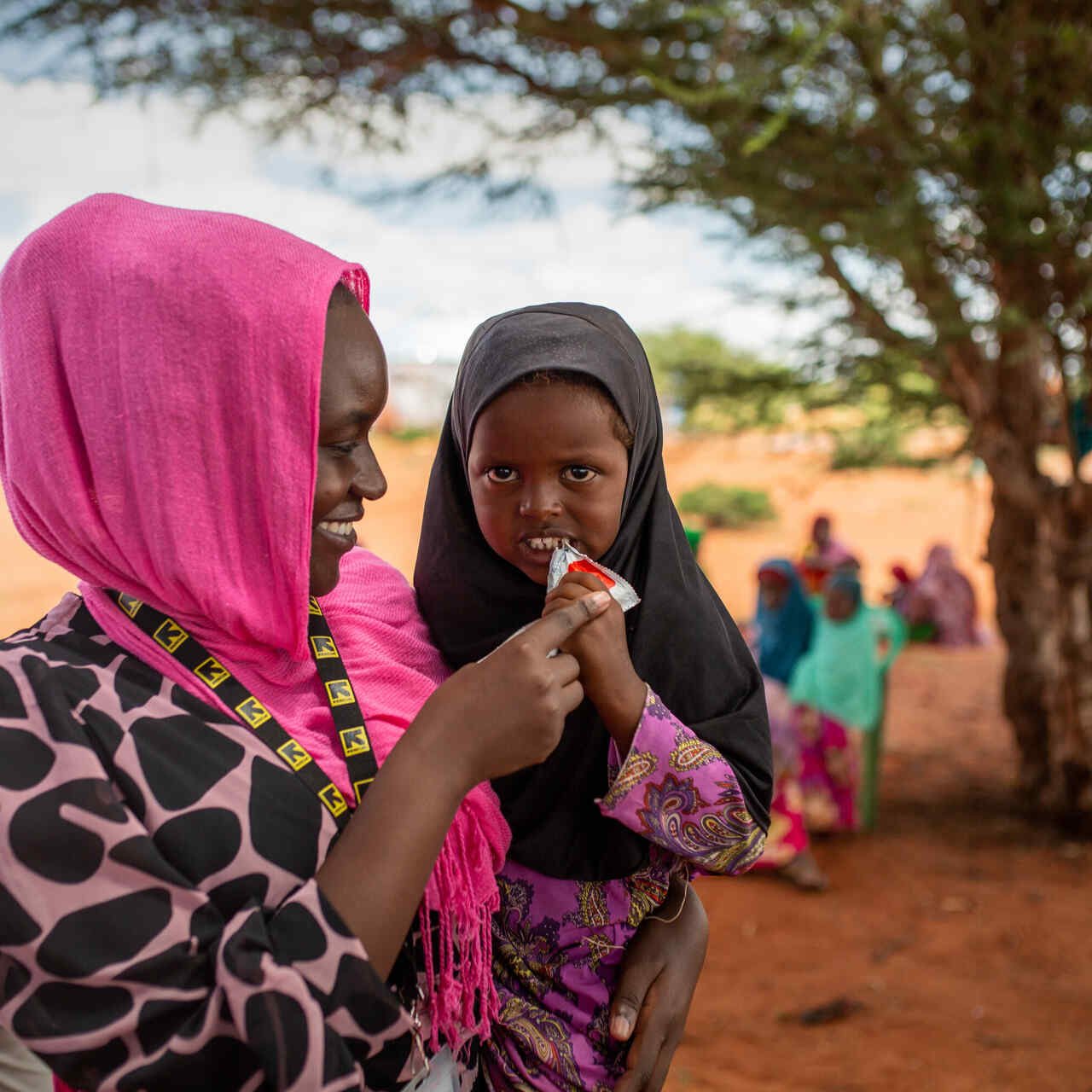
The United Nations' second Sustainable Development Goal aims to end global hunger by 2030. With less than five years to go, urgent action is needed to ensure everyone can access the food they need to survive and thrive.
The International Rescue Committee (IRC) is responding by delivering nutrition services in 21 countries.
What is hunger?
Hunger means not having enough food to meet daily energy and nutritional needs. Over time, this can lead to acute malnutrition—a serious and potentially life-threatening condition, especially for young children. Without proper nutrition, a child’s growth, development and immune system can be permanently damaged.
1. One in 11 people in the world go hungry
Global hunger has declined significantly since the 1970s, when roughly one in four people experienced hunger. But the crisis is far from over: Today, one in 11 people—over 700 million people globally—still face hunger.
In places like Sudan, Gaza and Yemen, people are experiencing extreme food shortages and acute malnutrition. When hunger becomes widespread, entire regions can quickly fall into famine.
2. Half of all child deaths are caused by malnutrition
Malnutrition is the leading cause of child mortality worldwide. Every year, up to two million children lose their lives to acute malnutrition. That’s one child every 15 seconds.
Even those who survive face lifelong consequences. Malnutrition can cause permanent damage to brain development and weaken the immune system, leaving children more vulnerable to disease.
Join the IRC in fighting for a world where no child goes hungry.
3. U.S. aid cuts are putting lives at risk
U.S. aid cuts are jeopardizing malnutrition treatment programs around the world, forcing many to scale back or close in communities where humanitarian aid is often the only source of support.
The consequences are especially severe for children suffering from the most severe forms of malnutrition. The IRC treats these children in ICU-like settings where even a momentary disruption to care can be life-threatening.
Although aid cuts are forcing the IRC to cut malnutrition support programs for tens of thousands of children around the world, we are doing everything we can to keep our programs operational. But we need your help—donate today.
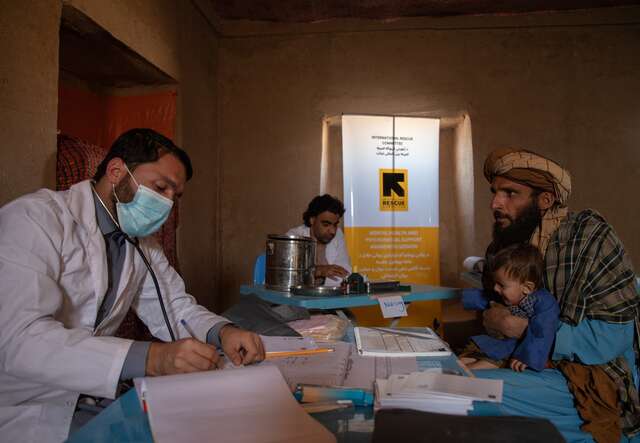
4. By the time famine is declared, people are dying
Famine isn’t just extreme hunger—it’s the worst stage on a scale used by experts to measure the severity of food shortages and malnutrition rates. By the time a famine is officially declared, many people have already suffered and died.
A famine can only be declared once the following criteria are met:
- At least 20% of households face extreme food shortages
- Acute malnutrition rates in children are 30% or higher
- There is a mortality rate of over 2 deaths per 10,000 people per day because of starvation or the interaction between malnutrition and disease.
By the time these conditions are reached, it’s already too late. In Somalia’s 2011 drought, more than 250,000 people had died from starvation before famine was even declared.
5. Parts of Gaza are experiencing famine
Famine thresholds have now been surpassed in Gaza City. The worst-case scenario is unfolding across much of the Gaza Strip. More than one million Palestinians are experiencing emergency levels of food insecurity, with growing risks of severe malnutrition and disease due to hunger and poor sanitary conditions.
Abdelraheem Hamad, an IRC staff member inside Gaza, explains:
"People are collapsing in the streets from emaciation. One day, I saw a child digging through a pile of trash for food. He found nothing—there are no scraps left. That moment captured the meaning of famine in a way words cannot describe.”
The IRC is on the ground in Gaza delivering critical malnutrition treatment, safe water and other humanitarian services to Palestinian communities devastated by war.
6. More than half of Sudan’s population faces extreme food insecurity
Sudan is experiencing the largest humanitarian crisis ever recorded. More than two years of civil war have pushed the country to the brink of a famine declaration, with more than 25 million people—over half the population—facing acute food insecurity.
More than 750,000 people are experiencing famine conditions, including in the country’s largest camp for displaced people. For communities facing famine conditions, death by starvation is a daily occurrence.
Read more about the crisis in Sudan.
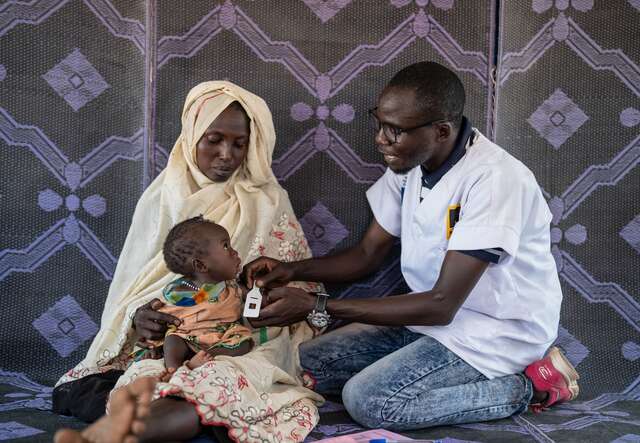
7. Less than 1 in 5 children receive treatment for malnutrition
Each year, an estimated 45 million children suffer from acute malnutrition. Historically, more than 80% of these children do not get the treatment they need.
There is a solution. The IRC’s evidence-based approach expands the reach of malnutrition treatment and helps more than 90% of children treated to make a full recovery. Our approach is also simple, scalable and efficient, allowing us to treat acutely malnourished children in 21 countries. The IRC’s treatment method costs 20% less per child treated and uses 25% less product than traditional approaches to treating malnutrition.
Help us treat more children in need.
8. Conflict and climate change are among the biggest causes of hunger
Conflict drives hunger and famine. When people are forced to flee, they lose safe access to food, health care and jobs. Violence can disrupt food supply chains and cut off entire regions from lifesaving humanitarian assistance.
Climate change is another major contributor, as it leads to worsening natural disasters, such as droughts and floods. Extreme weather destroys farmland and livestock, causing many to lose their income and access to food.
What you can do to help end hunger
In 2023, the IRC screened over 2.5 million children and pregnant and lactating women for malnutrition and admitted over 570,000 children under the age of five for nutrition services. With your help, we can continue our campaign against global hunger.
$50 can pay for an IRC health care worker to reach parents and help them detect acute malnutrition in their children.
$93 can aid in the delivery of emergency food to one crisis-affected family.
$160 covers the whole cost of treating one child for malnutrition, including medical care, food, and delivery costs.
More from the IRC
The International Rescue Committee (IRC) is at work in more than 40 countries, responding to the world’s most urgent humanitarian crises, including in Sudan, Ukraine and the occupied Palestinian territory. We also help refugees and displaced people find safety and rebuild their lives by resettling and integrating into new communities in the U.S. and across Europe.
Founded at the call of Albert Einstein over 90 years ago, the IRC remains dedicated to helping people affected by crises to survive, recover and rebuild their lives.
It consistently earns top marks from charity watchdog groups for the efficient use of donor contributions and the effectiveness of its work.
Support the IRC’s mission—help crisis-affected people survive, recover and rebuild their lives.
Stay connected: Follow the latest from the IRC and share posts from Instagram, LinkedIn, Facebook, Bluesky and X.
